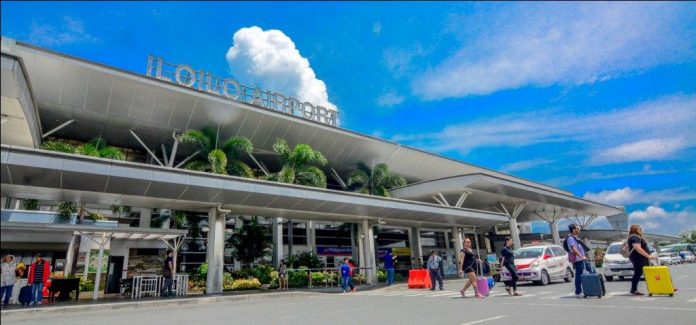
ILOILO City – Are authorities ready to respond to a terrorist attack at the Iloilo Airport in Cabatuan, Iloilo?
For three hours on Dec. 14, from 8 a.m. to 11 a.m., the Iloilo Airport will shut down for a simulation of such an attack, specifically, bombing. It would test the skills of the responders such as the aviation security personnel, police and military troops, and medical teams, among others.
The closure would be total, according to Civil Aviation Authority of the Philippines’ (CAAP) Iloilo Airport acting manager Manuela Luisa Palma, because the simulation exercise would be “full-scale.”
“There will be no flights, no passengers at the terminal,” she stressed yesterday.
Classified as an international airport, the Iloilo Airport is the first airport in both Western Visayas and the island of Panay to be built to international standards, and it is also considered to be the primary gateway into the region. It opened to commercial traffic on June 14, 2007.
CAAP issued the announcement on the shutdown early so that passengers with scheduled Dec. 14 flights could make arrangements with their airlines ahead of time.
“I-check nila if na pa-early, delayed or cancelled ang flights nila para wala sang hassle,” said Palma.
As of this writing, five flights were
confirmed to be affected by the shutdown (two for Cebu Pacific, two for
Philippine Airlines and one for Air Asia).
According to Palma, this security simulation exercise is a required practice
every other year in certified aerodromes such as the Iloilo Airport.
The Iloilo Airport has a 13,700-square-meter main passenger terminal. It is divided into three levels: arrivals and baggage claim on the first floor, check-in on the second floor and departures on the third floor.
Designed to accommodate 1.2 million passengers a year over a decade ago, it is poised for expansion as it now serves 2.4 million passengers annually.
The current airport complex consists of a single runway, various administrative and maintenance buildings, waste-sorting and water-treatment facilities, a power-generating station, a cargo terminal, and a main passenger terminal.
Its location on the Tomas Confesor Highway, a major highway traversing Panay Island, makes the airport accessible from all parts of Iloilo and Panay by road, while its proximity to the currently defunct Panay Railways network could potentially link the airport to the rest of Panay by rail.
The Iloilo Airport has one primary 2,500-meter runway 45 meters wide. It can support wide-bodied aircraft such as the Airbus A330, Airbus A340, Airbus A350 XWB, Boeing 777(with reduced payload for the -300 series or -200 series), Boeing 767, Boeing 757, Antonov An-124 Ruslan, McDonnell Douglas MD-11and Boeing 787.
Runway lights and an Instrument Landing System were installed, making the airport capable of supporting low-visibility and night landings under any weather condition.
Three jet bridges protrude from the passenger terminal above a 48,000-square-meter apron, enabling the airport to handle up to six aircraft simultaneously.
The Iloilo Airport ranked 18th in the 2019 Sleeping In Airports’ “Best Airports in Asia” list. Only one other Philippine airport made it to the list – the Mactan Cebu International Airport which placed 16th.
Sleeping In Airports is a travellers’ guide and resource website (sleepinginairports.net). It conducts an annual survey asking travellers to rate airports worldwide based on their overall airport experience.
Travellers rank their experiences based on the following factors:
* comfort (gate seating, rest zone availability, etc.)
* services, facilities and things to do
* food options
* immigration / security
* customer service
* navigation and ease of transit
* cleanliness
* “sleepability”/PN




